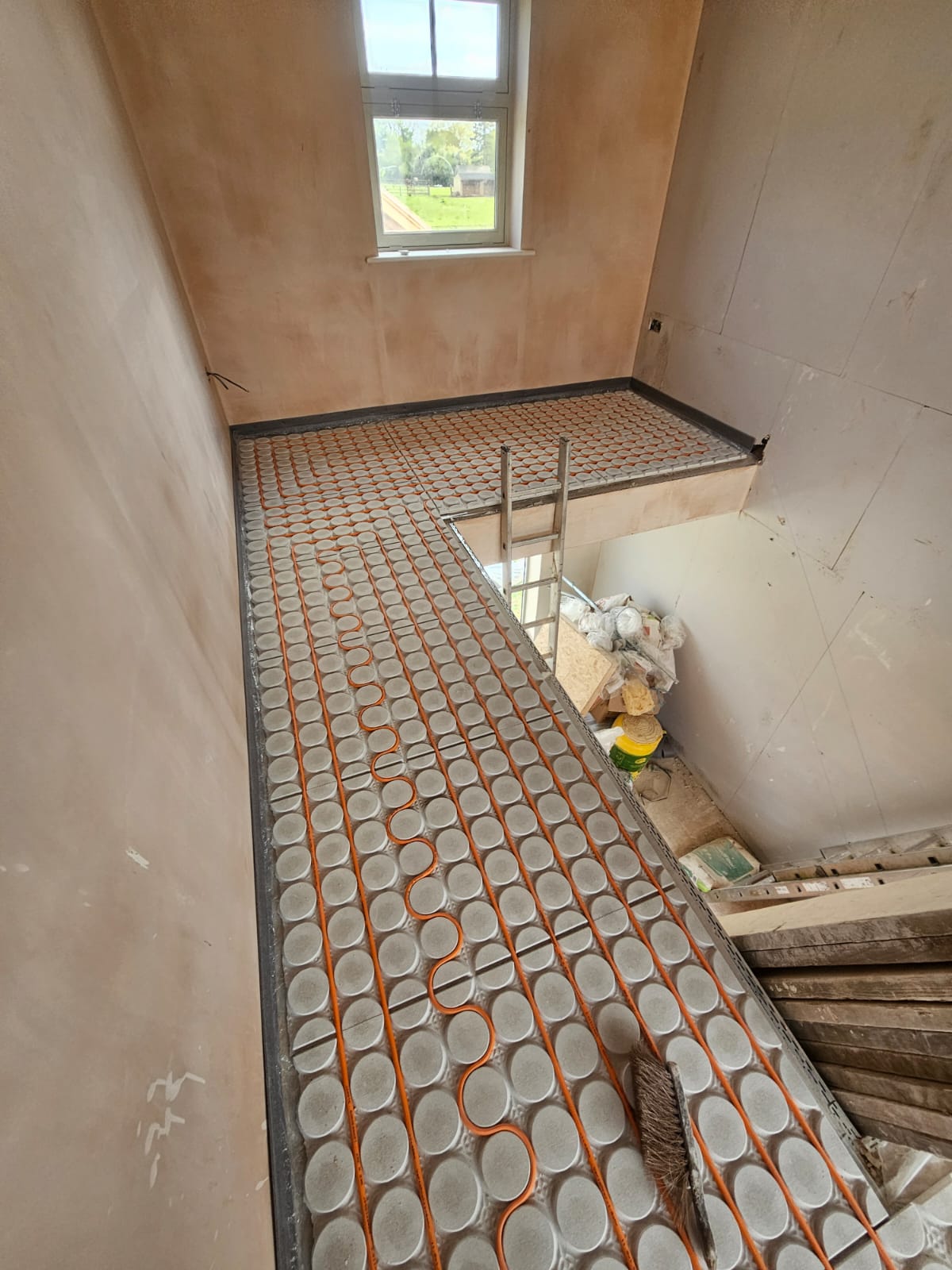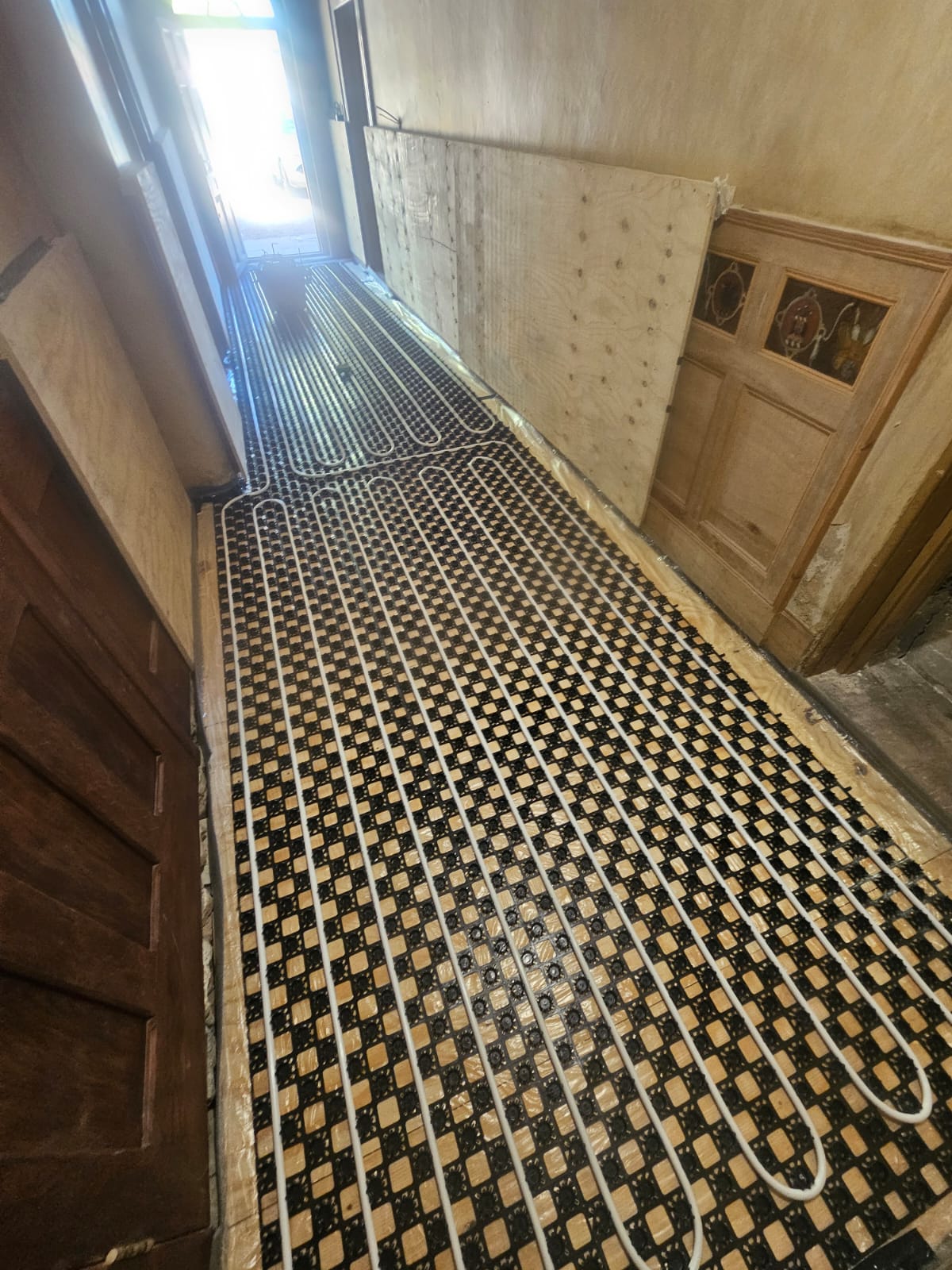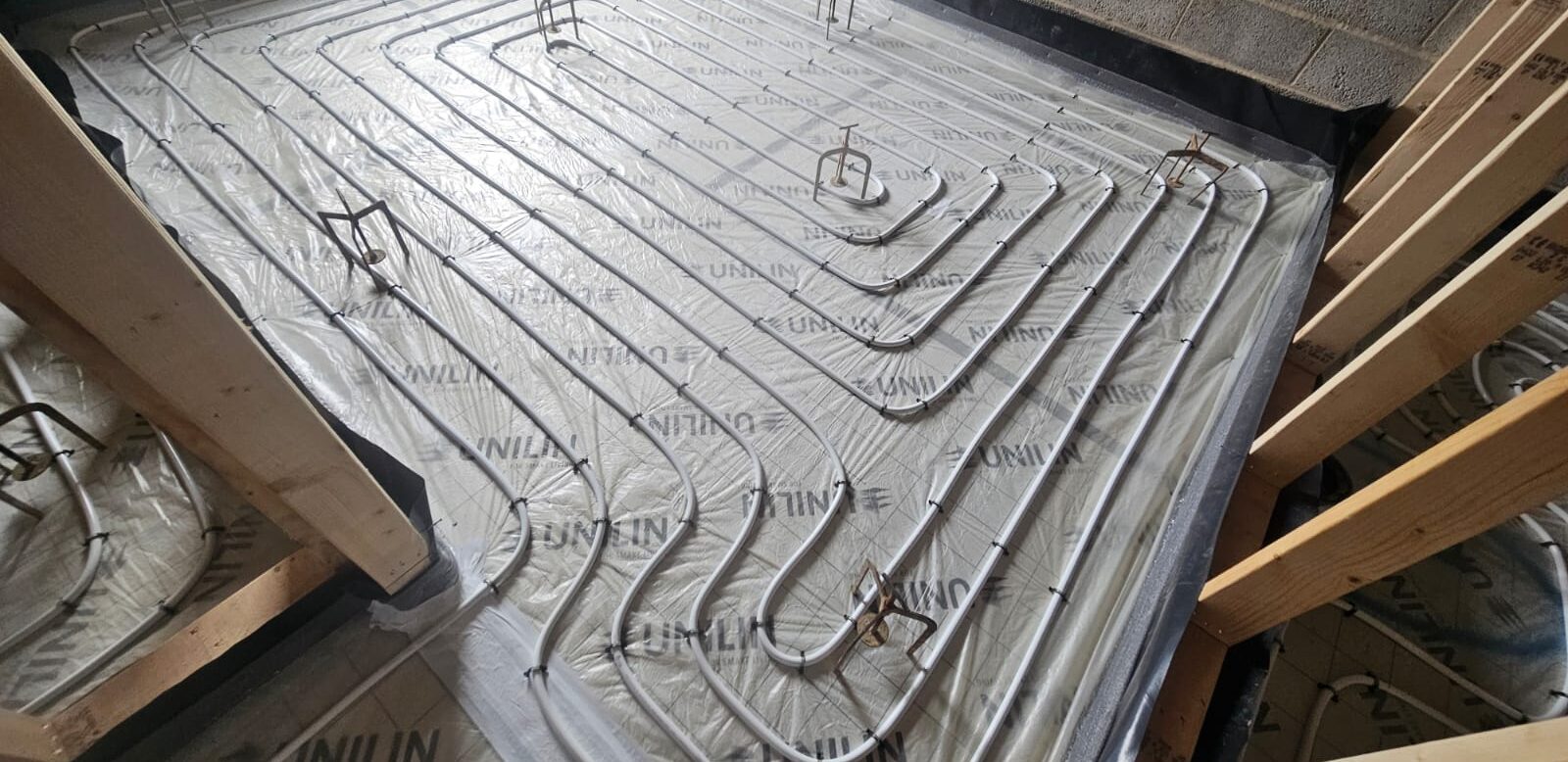Underfloor Heating

If correctly designed, Underfloor Heating Systems will deliver a very comfortable level of heating, often a degree or so cooler than a conventional on/off heating system from a boiler with radiators.
It is ideally suited to Heat Pumps which deliver their heat at a low temperature and slowly. The aim is to warm up the “thermal mass” of the floor and indeed the room as a whole – walls, ceiling, furniture etc. and then keep this thermal mass at a more constant comfort temperature.
If these principals are followed, the desired comfort heating will be acheived much more efficiently than with conventional radiators and the occupiers will simply not notice the heating.
Overlay Underfloor Heating
Overlay underfloor heating systems function by laying a network of heating pipes directly over an existing floor structure, such as concrete or timber, before adding a new floor finish.
Typically, these systems consist of pre-grooved panels or insulation boards that accommodate the heating pipes. The pipes are then inserted into the grooves or channels, forming a continuous loop.
A manifold connects the pipes to a heat source, such as a boiler or a heat pump, which circulates warm water through the pipes. As the water flows through the pipes, it emits heat, which transfers through the floor finish and into the room above, providing efficient and uniform heating throughout the space.
Overlay underfloor heating systems offer a convenient solution for retrofitting heating into existing buildings without major disruption or modification to the floor structure. They are suitable for various floor finishes, including laminate, engineered wood, and tiles, making them a versatile option for both residential and commercial applications
How does Underfloor Heating Work?
Water-based underfloor heating systems utilise a network of pipes installed beneath the floor surface to distribute warm water, creating a comfortable and efficient method of heating to indoor spaces.
Typically, a boiler or a heat pump heats water, which then circulates through the pipes embedded in the floor.
As the warm water flows through the pipes, it radiates heat upwards, warming the floor surface and subsequently the room above. The radiant heat from the floor provides consistent and gentle warmth throughout the space, eliminating cold spots often associated with traditional heating systems.
Water-based underfloor heating systems offer energy efficiency and improved thermal comfort while allowing for zoning and temperature control in different areas of the building.
Additionally, they can be paired with renewable energy sources such as solar thermal collectors or heat pumps, further enhancing their sustainability and reducing energy costs over time


Variotherm Modular Floor Specialists
Variotherm Modular Floor takes the overlay system to another level.
It comprises a 20mm thick Gypsum board with 100mm turrets allowing the installer to route bespoke 11.6mm pipes in any direction, horizontally or vertically across a floor. This allows for intricate piping arond obstacles as well as keeping the pipes quite close together.
The reduced spacing of the pipes both increase efficiency and the potential output of the system (usually described in W/m²). These pipes are then encaplsulated within this Gypsum material by the addition of a fast drying Gypsum compound with the same chemical makeup as the boards.
The result is a 20mm thick thermal mass with the Underfloor Heating pipes in the uppermost of the construction, just below the finished floor product – Engineered timber, Laminate, Ceramic tile, stone or carpet. It is one of the most efficient and most powerful water based Underfloor Heating systems available in the UK.

